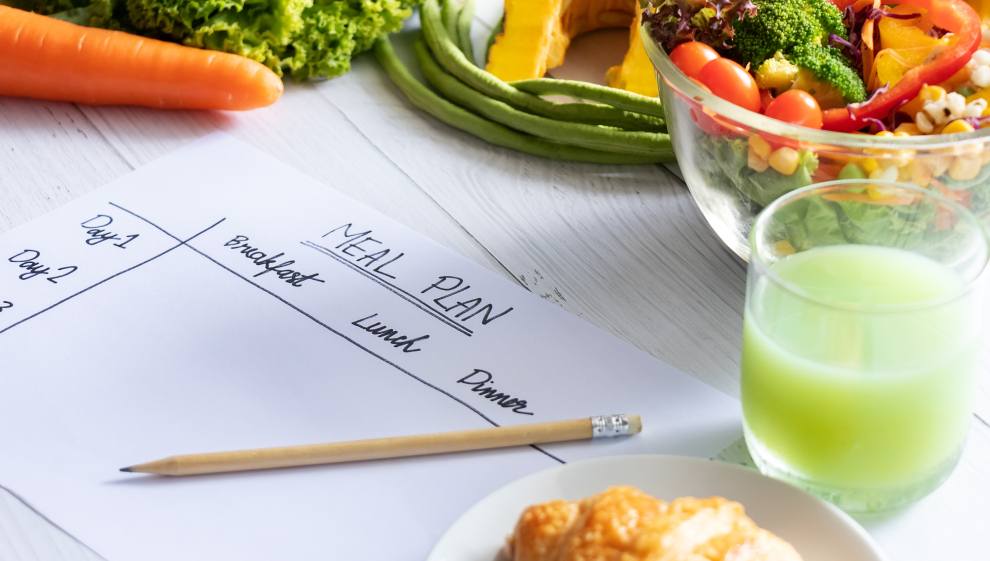Healthy eating on a budget
- Overview
1. Plan meals

Meal planning is essential for eating well on a budget. It ensures that when you shop, you only spend money on the foods you need. It also means you spend less time shopping because you know exactly what to buy, and it reduces the need for top-up shops.
When you plan and prepare lunches to take to work, it's often cheaper, and probably healthier, than eating at a café or work canteen. Alternatively, if you incorporate leftovers into your plan for lunch the next day, there’s less shopping and preparation to do, as well as less food waste.
Planning ahead also allows you to ensure you're having balanced meals, as well as consider your portion sizes – so you avoid overeating. Look for cheap and convenient ways to get your 5-a-day, such as through frozen fruit and vegetables.
2. Be a smart shopper



- Check labels: Use the traffic light system to compare products and opt for the healthiest options that have more green and less red on the label. See the image gallery to help you interpret food labels.
- Write a shopping list: Base this on your meal plan and only allow yourself to buy items on the list.
- Shop online: Or use a service such as Click and Collect, to avoid temptation and ensure you only buy the items on your list.
- Consider offers: Choose ones that fit with your plan or that you can incorporate into an imminent meal. Don’t be tempted by ‘buy one get one free’ offers for items that you don’t need or won't keep for long (unless they can be stored in the freezer).
- Buy own brands: Supermarket own brands are often cheaper.
- Opt for seasonal produce: When fruit and vegetables are in season, the price tends to come down.
- Check per 100g price: Often found in the bottom corner of the price tag, check this to make sure you’re getting the best deal.
3. Cook from scratch

While ready meals may be convenient, they can be expensive and often contain a lot of saturated fat and salt.
Cooking meals from scratch has many advantages when it comes to your budget and health.
Typically home-cooked meals will have lower salt and saturated fat. You can also incorporate inexpensive ingredients that are nutritious, such as lentils and pulses (e.g. beans and chickpeas).
You could opt for plant-based recipes or go 50/50 with meat and pulses. Using pulses and beans as your source of protein offers better value than meat. For example, you can substitute some or all of the beef mince you would usually put in a chilli con carne with various pulses such as black beans, red kidney beans, cannellini beans or chickpeas.
And when you cook large quantities, you can freeze the leftovers for busy days, or use them in another meal, such as adding leftover meat to a salad or sandwich – saving you time and money.
Top tips to help you eat well and save money
- Make a meal plan and plan your shopping trips
- Cook from scratch and consider meat-free meals, or bulking out your meals with vegetables or pulses
- Read the label to make sure you're getting the best value for money
- Use the traffic light system on packaging to identify healthier options (e.g. low salt and saturated fat products)
- Batch cook where possible and use leftovers for lunch or freeze for busy times.
Last updated Tuesday 10 January 2023
First published on Friday 23 December 2022

